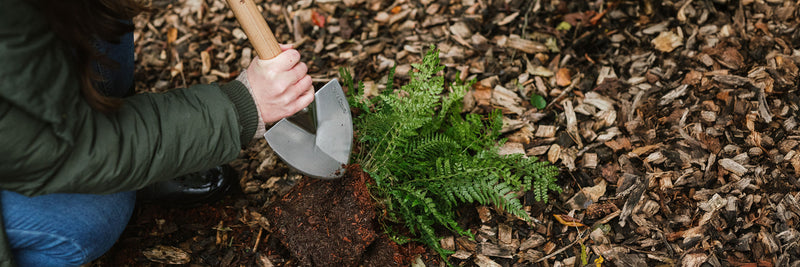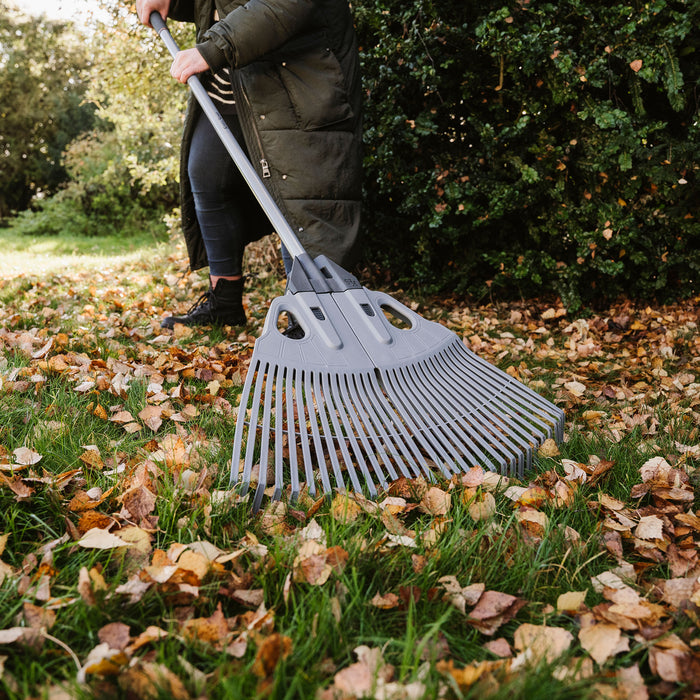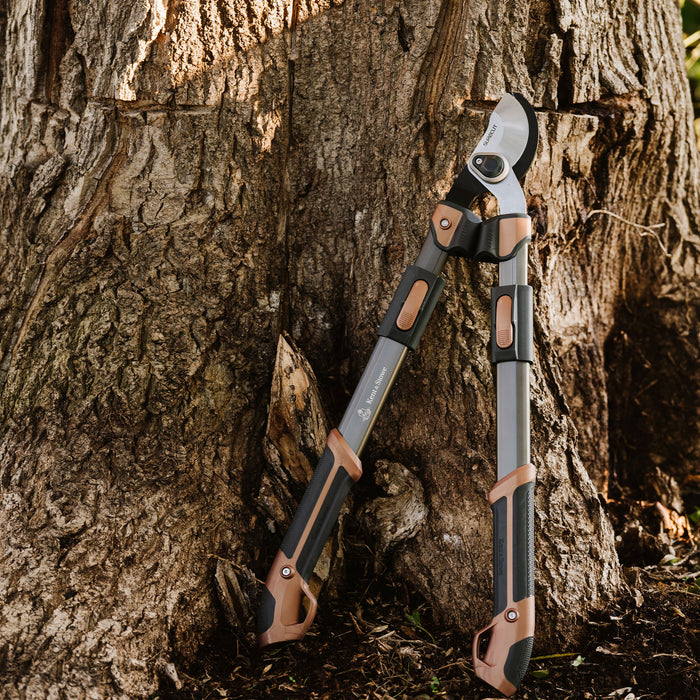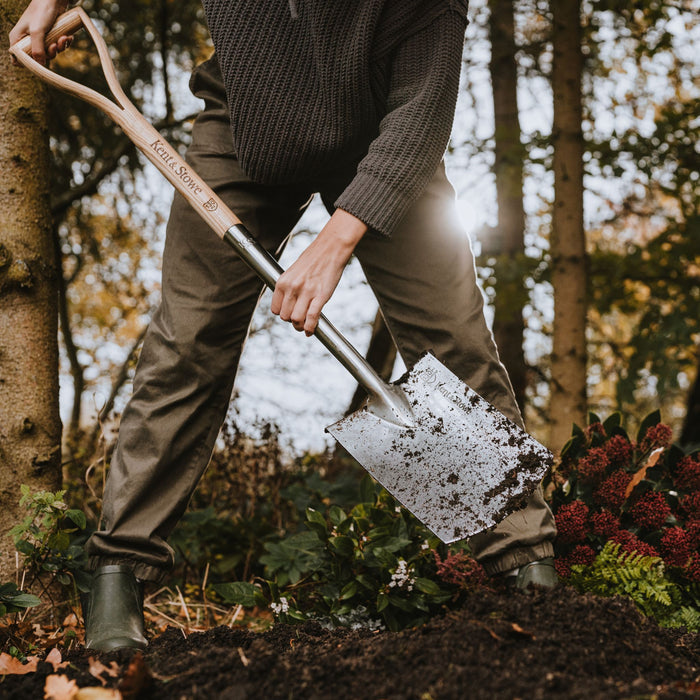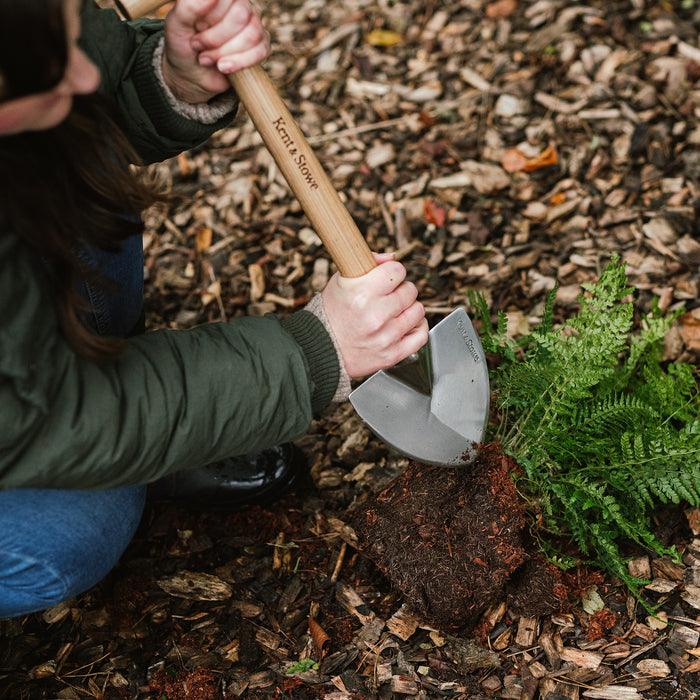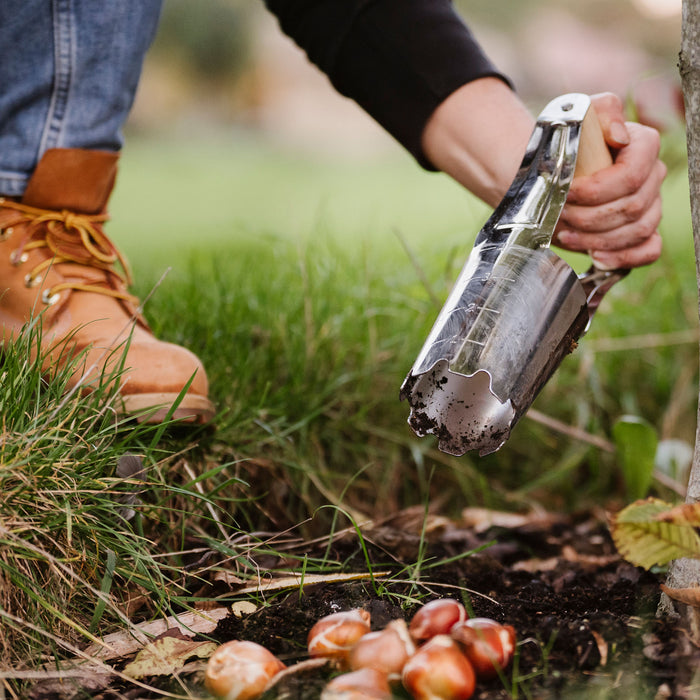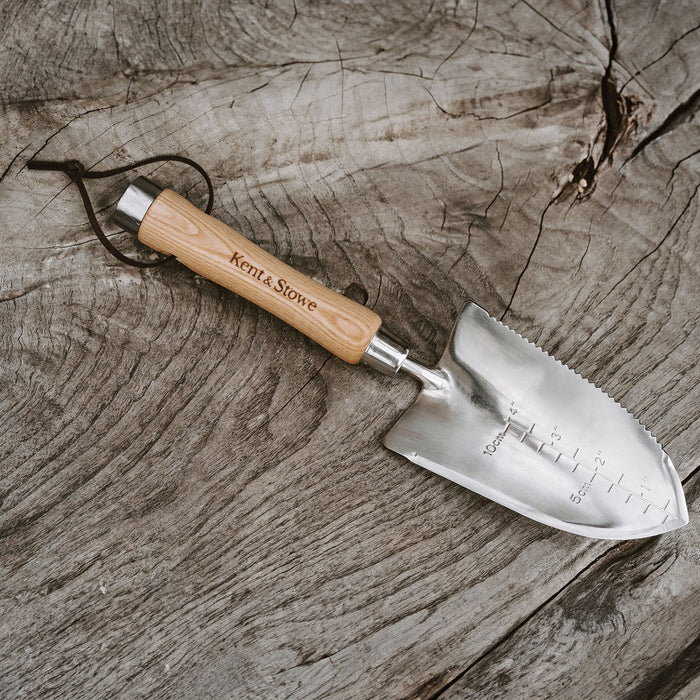As autumn deepens and the days grow shorter, November presents the perfect opportunity to prepare your garden for winter. While it may seem like the gardening season is over, this month is essential for groundwork that will benefit your plants in the months ahead.
Raking & Clearing Leaves
Tumbling leaves should be gathered up and put to good use. Left to decay, leaves on paths, patios, and driveways can turn into a slippery hazard. Rotting leaves on lawns will block out light and air, leading to patchy growth and encouraging moss. A 3 in 1 Leaf Rake will make light work of sweeping debris from your lawn as it also features detachable leaf grabbers to collect all the leaves after sweeping.

Gathered leaves can be used to make leaf mould, perhaps the best natural soil conditioner or home-made compost ingredient. Place leaves in a bin liner; add water if they’re dry, pierce the bag with a garden fork, and tie the top of the bag. It’ll need to be left (somewhere dark, like a corner of a garage) for up to two years to fully break down. When it's ready, you can apply to your borders.
Prune Trees & Shrubs
Pruning overgrown trees and shrubs in November is an essential task. By carefully removing dead, damaged, or diseased wood, you prevent decay from spreading, which could otherwise harm the plant. This process allows the tree or shrub to focus its energy on producing strong new growth when the growing season resumes in spring.
Pruning also improves air circulation and light penetration, which reduces the risk of fungal diseases and encourages healthier foliage. For overgrown trees, thinning the canopy helps reduce wind resistance, lowering the risk of storm damage in winter. Additionally, shaping shrubs during their dormant period helps maintain their structure and aesthetics, promoting a fuller, more attractive appearance when they regrow.
For best results, always use sharp, clean tools like bypass pruners, loppers, or pruning saws to make smooth cuts that will heal quickly. Be sure to cut back to healthy growth or just above a bud, as this promotes regeneration. It's also important to disinfect tools between cuts to prevent the spread of infections to healthy plants.

Tree Planting
Our changing UK climate means that the best time to plant trees, shrubs, and perennials is increasingly during autumn and winter, when it is cool and moist. Springs can be dry and warm, and establishing new plants at this time can be harder work than in autumn.
November is a prime month for planting trees, shrubs and perennials as the ground is still warm enough to encourage root growth before winter fully sets in. Bare-root trees and shrubs are particularly suited for planting at this time.
When planting trees, shrubs or perennials, check pot-grown plants are well watered before putting them into the ground, as this will help ensure they begin to establish well as soon as they are planted.
Making planting holes in winter is likely to be easy as the soil should be moist. Use a digging spade or planting spade to dig a hole a little deeper than the pot of the plant you are putting in the ground and three times the width, breaking up any compacted clods and removing stones and roots.
Keep the soil moist after planting to ensure the roots establish well. Our Kent & Stowe 9L Watering Cans are a great choice for watering trees and large shrubs.
Read our step-by-step guide on how to plant trees.

Dividing & Replanting Perennials
By November, many perennials have stopped flowering and gone dormant, making it the ideal time to divide and replant them. Dividing perennials promotes healthier growth and helps maintain the shape of your garden.
The Kent & Stowe Perennial Spade is the ideal tool for splitting up perennial plants, as it has a pointed head for easy slicing through roots without damaging the plant. It can also be used to dig holes for replanting the divided sections, as its midi handle allows you to have more power and comfort.

Weeding
Even in mild autumns, weeds such as dandelions, chickweed, and groundsel can continue growing. Tackling them now prevents them from getting out of control come spring. Hand weeding is best after rainfall, as the soil is softer and roots come out more easily.
The Kent & Stowe Stainless Steel Oscillating Hoe is perfect for tackling persistent, stubborn weeds. Its sharp-edged blade easily cuts through weeds just below the soil surface, and it’s even effective in gravelled areas.

Planting Tulip Bulbs
November is the last call for planting tulip bulbs if you want a vibrant display in the spring. The cool autumn soil is perfect for root growth while avoiding early sprouting.
By planting a mix of early and late-flowering tulips, you can enjoy brilliant displays from late March and throughout April and May. When shopping for tulips, inspect bulbs carefully to ensure that they’re healthy. Check that bulbs are firm and no rot or mould is visible.
Use a bulb planter to excavate holes, planting bulbs individually at two to three times their depth. Always make sure the pointed end is facing upwards. Deeper planting is advisable in colder regions of the UK, and bulbs need to be spaced at least 5cm apart to reach their full potential.

Clean & Sharpen Tools
Taking the time to clean, oil, and sharpen your gardening tools is essential to maintaining their performance and extending their lifespan. After a season of hard use, tools can accumulate dirt, sap, and rust, which, if left untreated, can cause damage or make them less effective. Proper maintenance not only ensures your tools are ready for next season but also improves their efficiency, making gardening tasks easier and safer. Read our How to clean your tools article to find out more.

Winter Planting
For an instant burst of midwinter glory, plant a container of winter bedding using the trusty Capability Trowel. Pansies and violas are great value for money, while the foliage of heuchera is an eye-catcher with richly coloured hues. Winter cherry, Solanum capsicastrum, is a must for its vividly coloured ornamental fruits, while Gaultheria mucronata promises to delight with purple, red or white berries.
November is your last chance this year to nurture sweet pea seeds into life (although they can be sown early next season too). By starting these favourite hardy annuals now, plants will benefit from a head start, with blooms borne earlier next season on stronger stems.
Winter-flowering pansies are a firm favourite with many gardeners and bring a myriad colours to any pot, border, or windowbox. To ensure you have a strong supply of flower colour through the colder months, deadhead dying flowers by using Eversharp All Purpose Secateurs which are ultra sharp.

Christmas Gifting
November is a great time to start thinking ahead to the festive season, and one enjoyable task is preparing Christmas gifts. Consider thoughtful, gardening-inspired gifts like kids' gardening tools or some beautiful gardening gloves.
You can also take cuttings from popular indoor plants, like succulents or pothos, to pot up as unique gifts for friends and family.
Read our Ultimate Gift Guide for Gardeners for more inspiration



